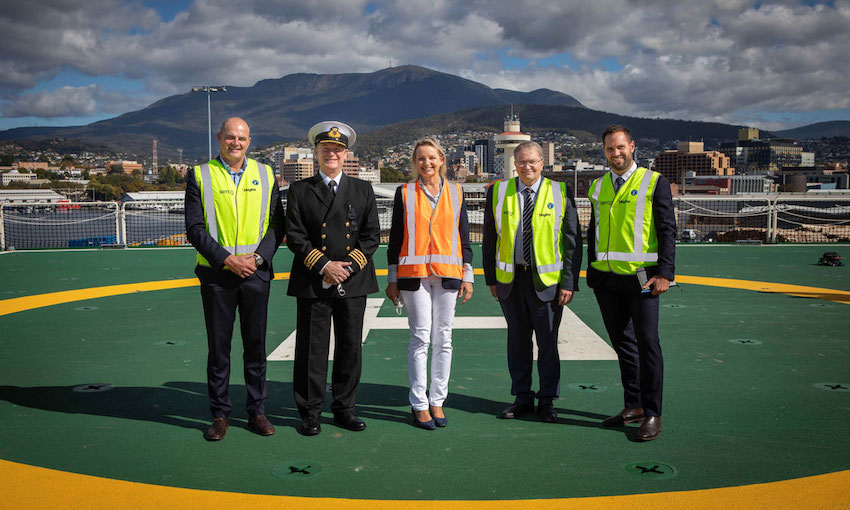SERCO and the Australian Antarctic Division have celebrated the successful operations of research vessel Nuyina during this year’s Antarctic season.
The celebration took place in Hobart and was also attended by minister for environment Sussan Ley.
Maritime services provider Serco said it has supported marine science activities across Australia’s Antarctic research stations.
Station refuelling, helicopter operations, equipment and supply deliveries and safe transportation for expeditioners were among the activities carried out during the season.
Serco maritime managing director Clint Thomas said Serco’s operation of Nuyina ensured vital Antarctic research and operations could be carried out.
“Serco successfully supported two Southern Ocean voyages this season, which achieved a number of exciting firsts, and tested the vessel’s capabilities in some of the world’s most formidable conditions,” Mr Thomas said.
On the most recent voyage, Serco and AAD teams delivered 100 tonnes of regular resupply cargo and 350 tonnes of building supplies.
They also delivered a specialist trades team to commence on-ground works on AAD’s Macquarie Island modernisation program.
“Offloading a large amount of cargo piece by piece from Nuyina onto amphibious vehicles that navigate through surf, drive up the rough and rocky terrain carrying material to the station is no easy feat, yet our expert crew worked with watercraft operators to ensure this vital operation was completed successfully,” Mr Thomas said.
He said Serco also played a role in the scientific discoveries of AAD expeditioners, namely that of a previously unknown canyon more than 2200 metres deep and 55 kilometres long.
“Being part of the discovery … is exciting and certainly a memorable experience for our crew,” Mr Thomas said.
“To then map the summit of a 2500-metre-high underwater mountain, which is higher than Mount Kosciuszko, really brings to light the capability of this incredible ship.”
Nuyina is now en route to Singapore for a scheduled dry-dock before returning to Hobart later in the year to commence its second Antarctic season operations.

